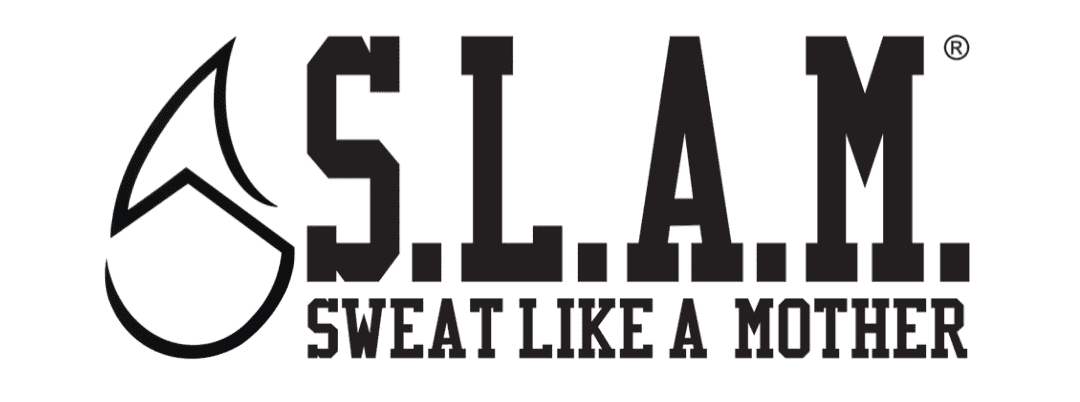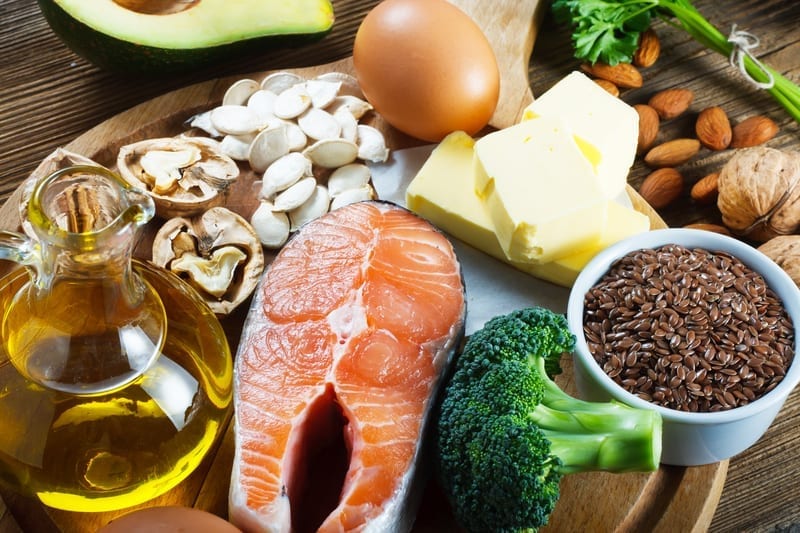“Fat- free” this… “low-fat” that… Let’s face it, there are so many choices out there, and so many product labels highlighting their reduced/fat-free claim, likely appealing to the health conscious consumer. But is this REALLY the way to go? Is fat so bad? Should we avoid it?
The answer is…. NO! We should NOT avoid fat! Actually, 25-30% of our total calories should come from fat. We need it to help our bodies absorb fat-soluble vitamins (vitamins A, D, E, and K), to provide insulation and a cushion for our cells/organs, and for healthy skin and hair. Fat is also a much needed energy source—- the next to be used for fuel after carbohydrate is depleted during exercise. We need fat to keep our bodies going! From a dietary standpoint, including fat at meals and snacks can also keep us feeling satisfied.
BUT… Not all fats are created equal!
So, here’s the skinny (haha 😉 no pun intended) on the different types of fats:
The Best: 1) Mono-unsaturated fats- these have a double positive benefit on our health because they lower our bad (LDL) cholesterol and increase our good (HDL) cholesterol. Some sources of mono-unsaturated fats have been shown to have an anti-inflammatory affect, which plays a role in the healing/recovery process from an injury or infection, and reduces risk of chronic diseases.
Food Sources: 
- Olive oil
- Canola oil
- Peanut oil
- Safflower oil
- Sesame oil
- Olives
- Avocados
- Nuts (peanuts, almonds, pecans, etc.)
- Natural nut butters
AND…
2) Omega-3 fatty acids- This is a type of Poly-unsaturated fat. Similar to the mono-unsaturated fats, Omega 3’s have a strong positive connection to heart health. They have been shown to reduce blood pressure, increase good (HDL) cholesterol, and reduce Triglycerides (a type of unhealthy fat in our blood). They also play a key role in brain development and function, and may also help to reduce inflammation.
- Fatty fish (salmon, tuna, sardines, mackerel, trout, herring, etc.)
- Walnuts
- Ground Flaxseed, and flaxseed oil
- Chia seeds
- Seaweed
- Some foods are fortified with Omega 3’s (including some types of peanut butter, margarines, orange juice, and eggs)
The Good: Omega-6 fatty acids. This is the other type of Poly-unsaturated fat which has also been linked to heart healthy benefits. However, there is concern that diets too high in Omega-6s can negate the protective benefits of the Omega-3s, and may actually promote inflammation. So… include these in your diet, but don’t go crazy!
Food sources:
- Sunflower oil
- Soybean oil
- Corn oil
- Mayonnaise
- Many salad dressings
The Bad: Saturated fats- These fats are solid at room temperature. A high saturated fat intake can raise bad artery-clogging cholesterol. It is recommended that saturated fat make up less than 10% of total calories. For someone with a history of heart disease or high cholesterol, less than 6% is recommended.
Food Sources:
- Butter
- High fat red meats (full fat ground beef, ribs, high fat steaks such as ribeye)
- Pork bacon or sausage
- Poultry skin
- Full fat dairy (whole milk, regular cheese, etc.)
- Coconut, coconut oil and milk
- Palm oil
- Many fried foods
The Ugly: Trans fat- This is the worst type of fat for us. Trans fat is created through a chemical process called “hydrogenation” in which a healthy fat (once liquid at room temperature) becomes solid. This allows for a longer, more stable shelf life. However, trans fats have a double negative effect on our health because they raise bad (LDL) cholesterol, and lower good (HDL) cholesterol. They have also been shown to promote inflammation, which is linked to heart disease, stroke, diabetes, and other chronic conditions. These should be consumed at a minimum or COMPLETELY AVOIDED if possible!
Food Sources:
- Stick margarine
- Regular (not natural) peanut butter
- Shortening
- Some commercially fried foods
- Some processed/packaged foods and snacks
So here is what I recommend in a nutshell 😉 :
- Focus on eating mostly healthy mono-unsaturated and poly-unsaturated fats. Choose these in place of saturated and trans fats.
- If you are watching your weight (or have a goal to lose weight), watch portions of fats… even the healthy choices! Because fats have 9 calories per gram (more than double the amount in carbohydrates and protein which have 4 calories/gram), amounts should be limited.
- Try to include some fat at all meals. It can help keep you feeling satisfied for longer.
- Aim to eat two servings of fish per week. A serving is 3-4 oz (size of a deck of cards).
 But what about all the product choices out there and that GOSH DARN LABEL?
But what about all the product choices out there and that GOSH DARN LABEL?
- I recommend choosing the full fat versions of the foods rich in healthy fats (mono-unsaturated and poly-unsaturated fat foods listed above). That way you get the benefits of the healthy fat and less of a chance that the manufacturer added other ingredients (such as sugar) to compensate for the flavor.
- Choose reduced fat versions of the unhealthy (saturated fat) choices. Consider 1% or skim milk, low fat cheeses, low fat or nonfat yogurts, etc. Also, go with lean meats (i.e. skinless chicken breasts, turkey, fish, 90% or leaner beef, etc.) most often.
- Make sure that the nutrition facts label says 0 grams of Trans fat. BUT, get this… the label can claim to have 0 grams of trans fat as long as there is less than 0.5 grams per per serving! This is very deceiving!!! To be sure the product does not contain trans fat, check the ingredients label and avoid any foods with “hydrogenated” (“fully” or “partially hydrogenated”) oils listed. Definitely check the ingredients label for any tub or liquid margarines, peanut butter, and boxed food items/snacks such as crackers, cookies, chips, etc.
- Keep in mind that the nutrition facts label must list grams of Total, Saturated, and Trans fats, but will not necessarily list Mono-unsaturated or Poly-unsaturated fats. So for example, let’s say a product contains 8 grams of Total fat, 2 grams of saturated fat, and 0 grams of trans fat… the difference (8 minus 2) of 6 grams is coming from the healthy fats 🙂
Hope this helped clear up some of the confusion around fat. Please comment below with any questions :).
TAKE ACTION!: Take stock of the food products in your pantry, fridge and freezer. Check out the labels if you need to. Are there any foods with too much unhealthy fats you can eliminate or cut back on? Any healthier fat choices you can replace them with? Please share!



Recent Comments